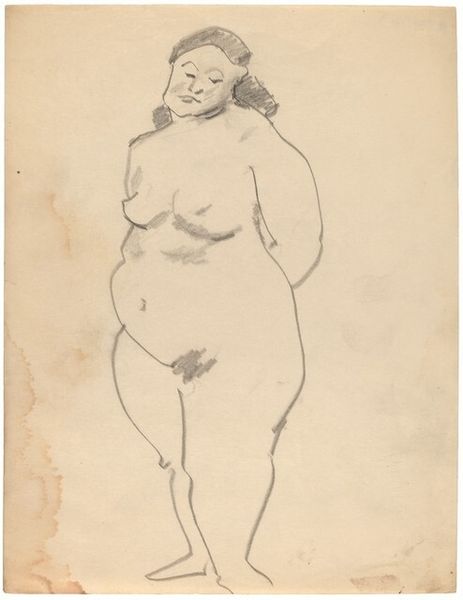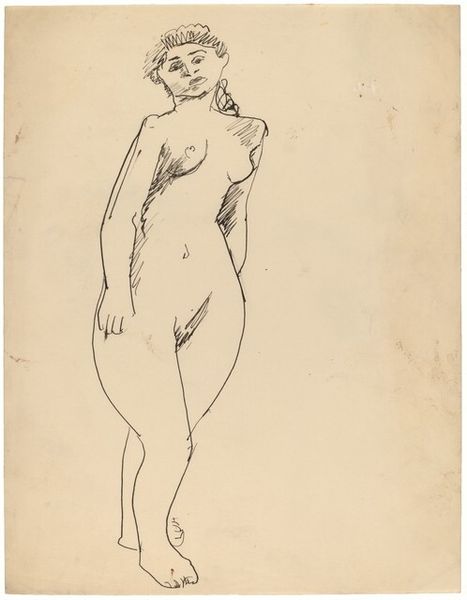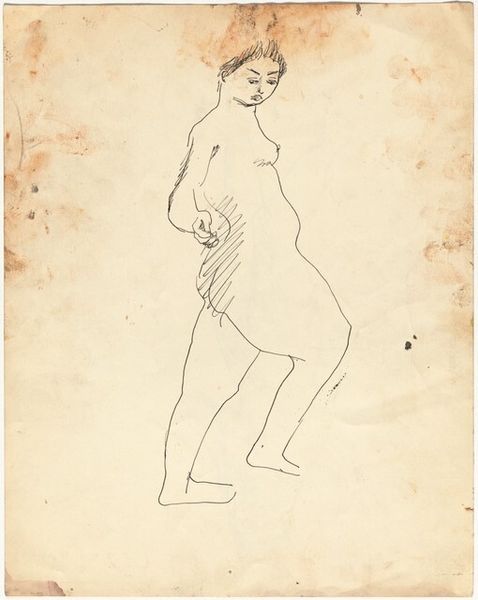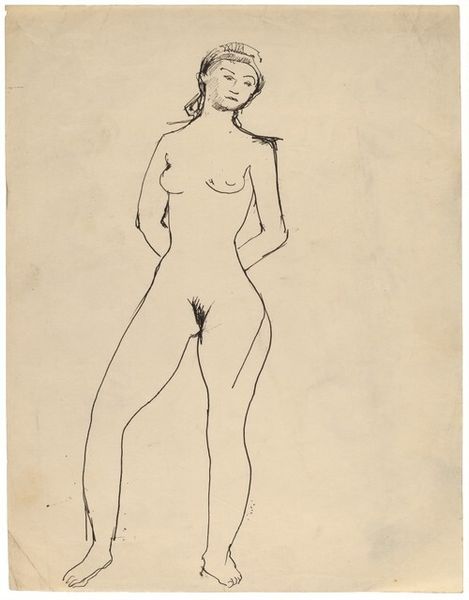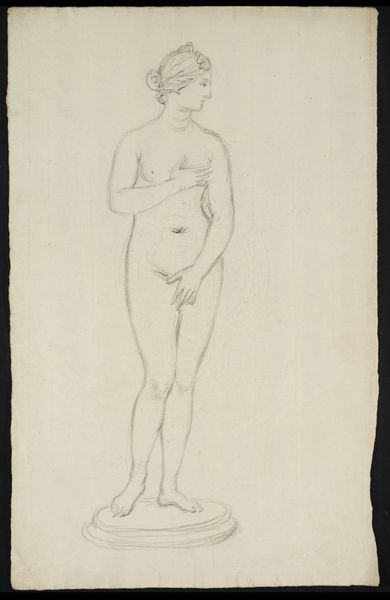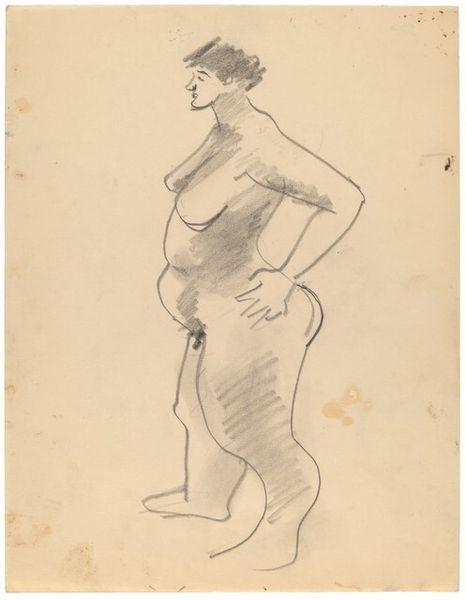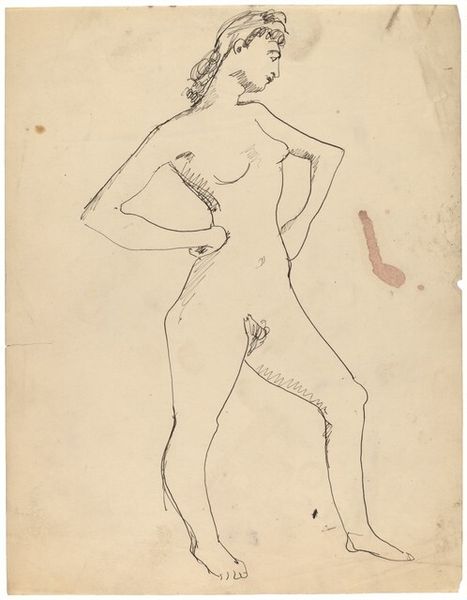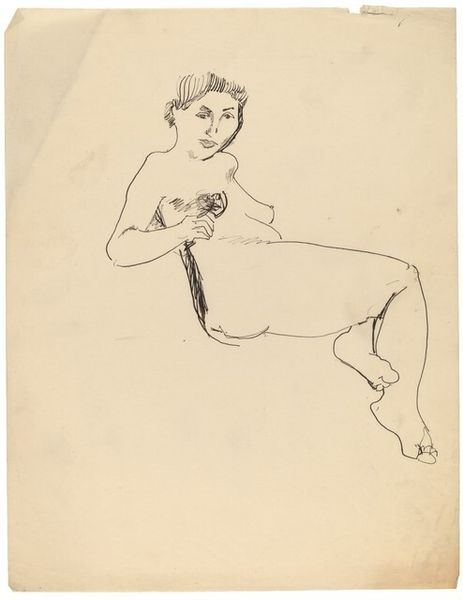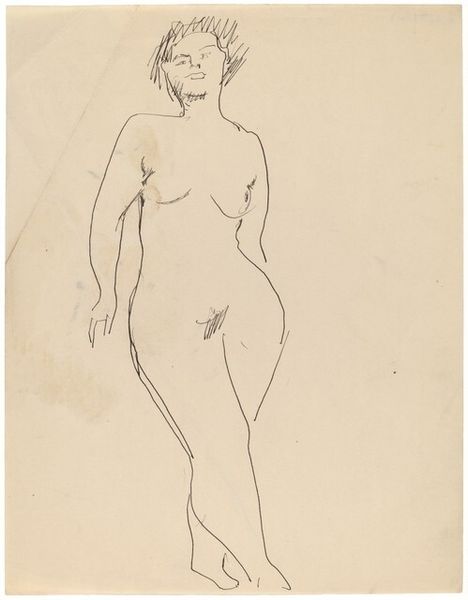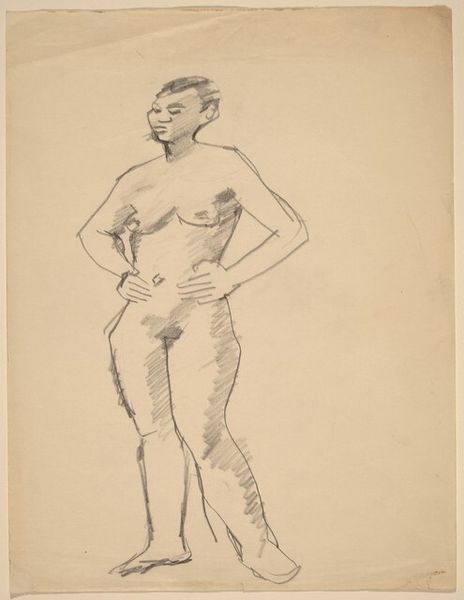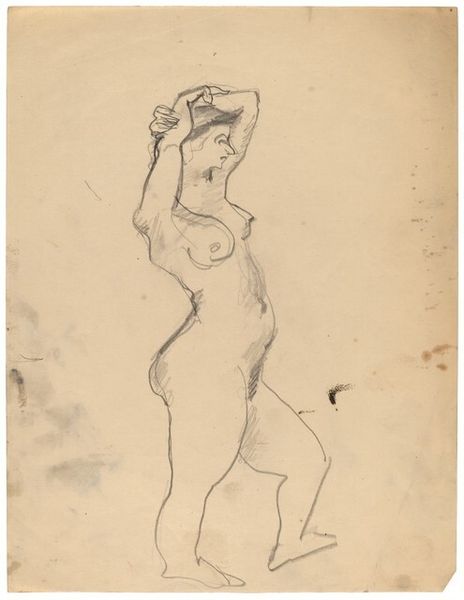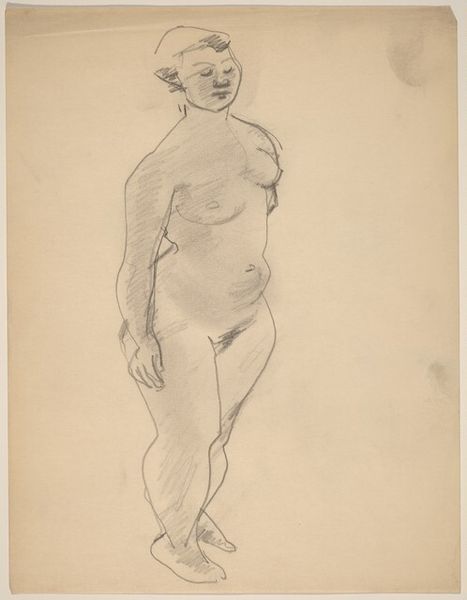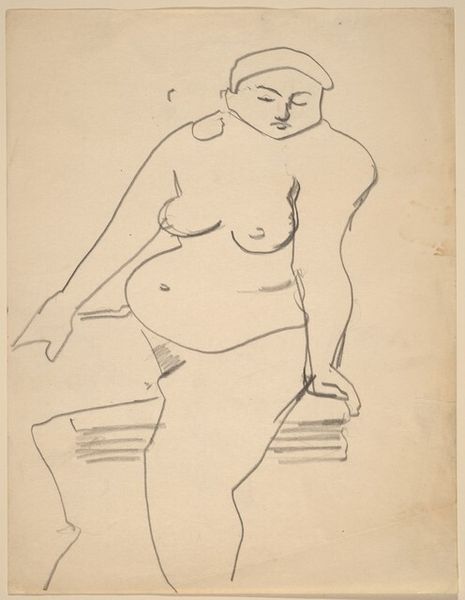
drawing, pencil
#
drawing
#
figuration
#
pencil
#
nude
#
realism
Dimensions: overall: 27.9 x 21.6 cm (11 x 8 1/2 in.)
Copyright: National Gallery of Art: CC0 1.0
Editor: This pencil drawing presents a standing nude, turned to the left, with her arms at her side. It's attributed to Mark Rothko, though undated. There's a raw, almost vulnerable quality to it, don’t you think? What are your thoughts on how this piece resonates within the broader scope of figuration, especially considering the male gaze often associated with nude art? Curator: That vulnerability is palpable. Now, think about the period. Rothko, later known for his abstract expressionism, began with figurative works. This nude exists in dialogue with early 20th-century modernist concerns but also potentially critiques established power structures. How might depicting a nude in this way – seemingly devoid of idealized glamour – challenge conventional representations of women and the power dynamics inherent in those representations? Editor: So, by not idealizing the figure, it steps away from the tradition of objectifying the female form? Is it possible to see a feminist message here, even if unintended by Rothko? Curator: It's complex. We need to consider whose gaze is being centered, what is the intention of the work and also, in terms of reception theory, what interpretations do different audiences ascribe to the piece based on gender, race, class, or social backgrounds. Perhaps not necessarily a feminist message but rather a break from academic tradition and the prevailing male gaze of his time. The question remains how we today, armed with our current socio-political understanding, contextualize such works in light of the history of representation. What do you take away from viewing the piece through this perspective? Editor: It encourages me to consider the role of the viewer and how social context really shapes meaning. There’s more than just what’s on the page. Curator: Exactly. Art is not created in a vacuum; its power lies in its continued engagement with culture, social justice issues, identity, gender and power.
Comments
No comments
Be the first to comment and join the conversation on the ultimate creative platform.
